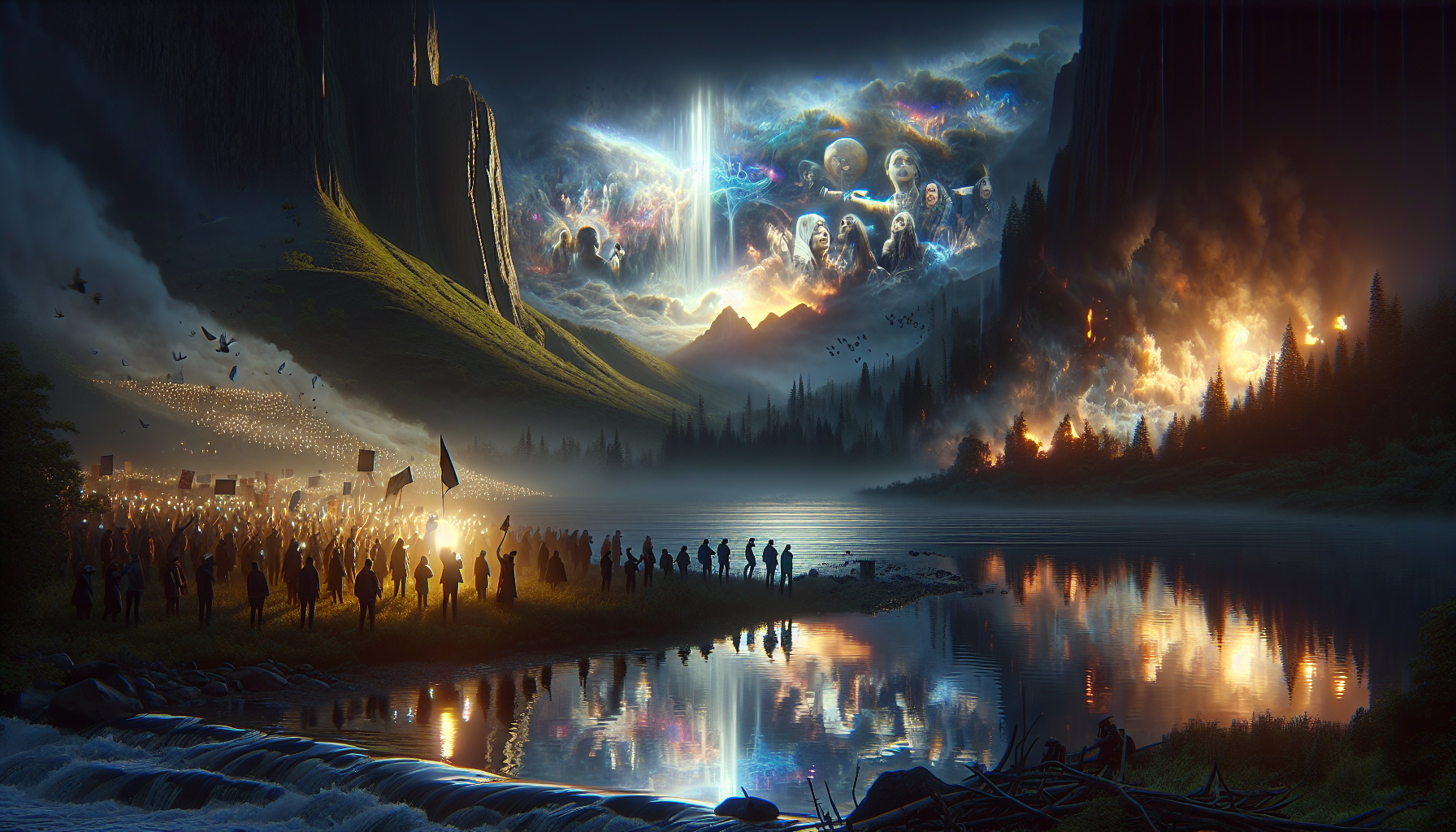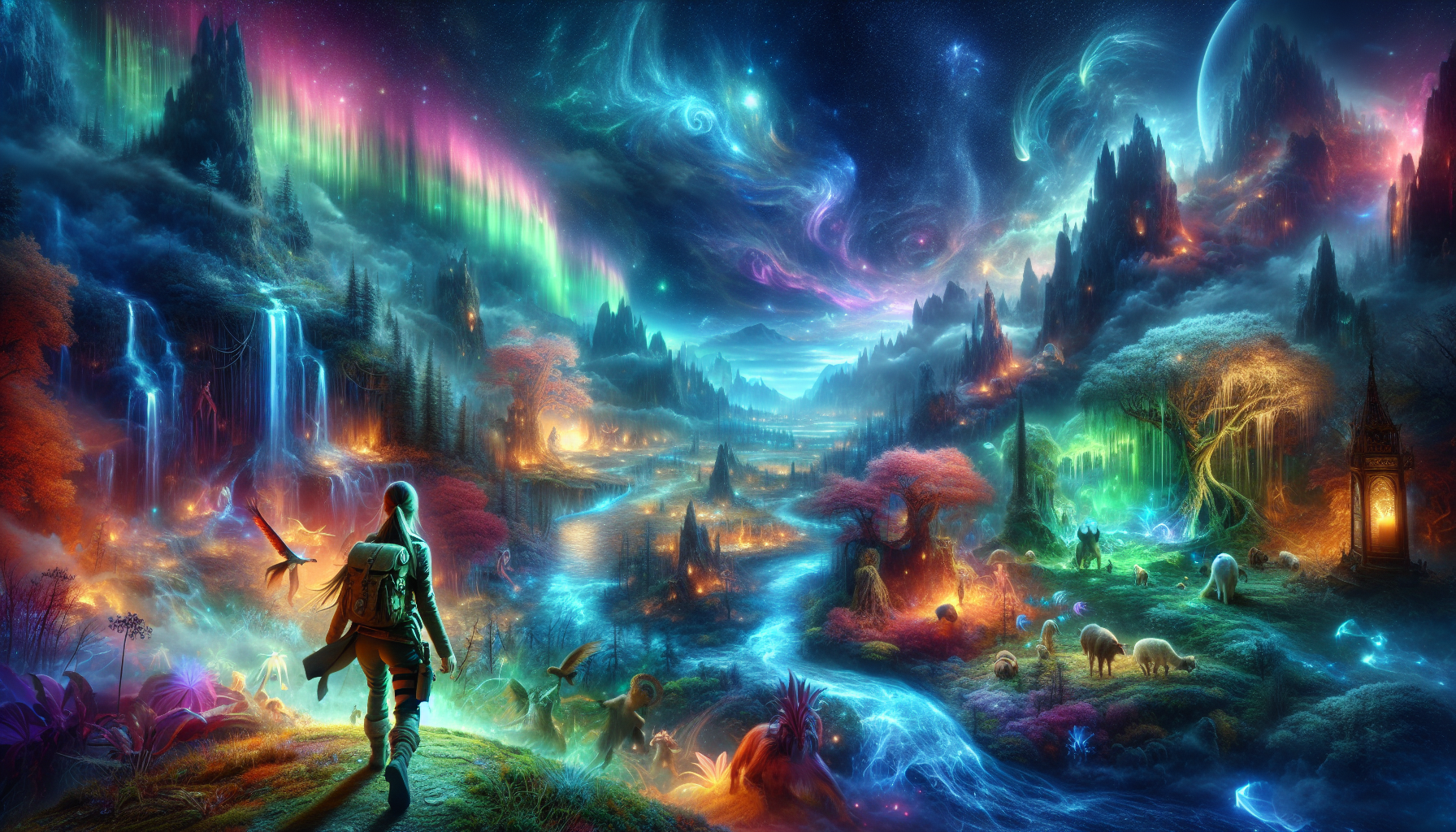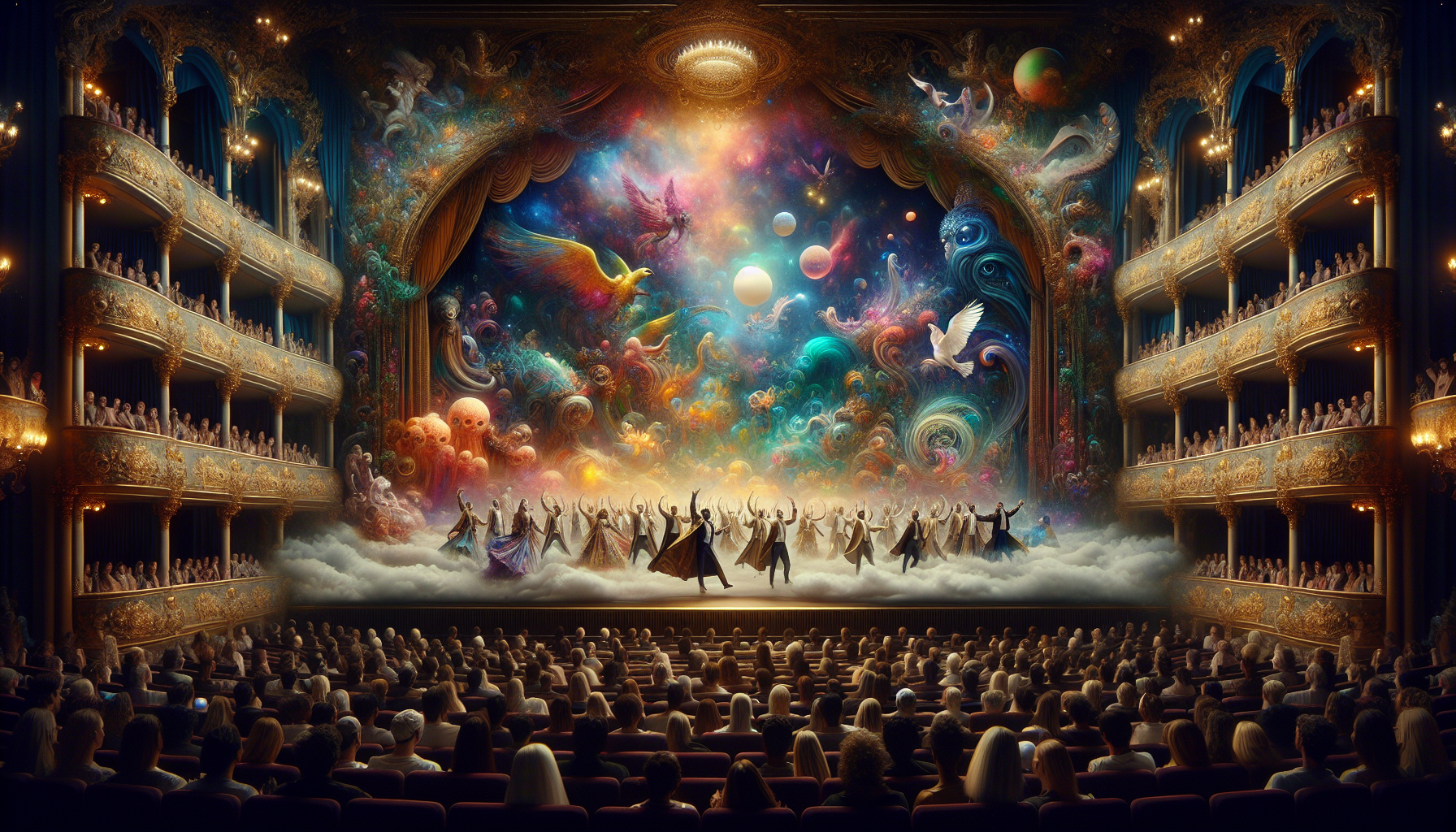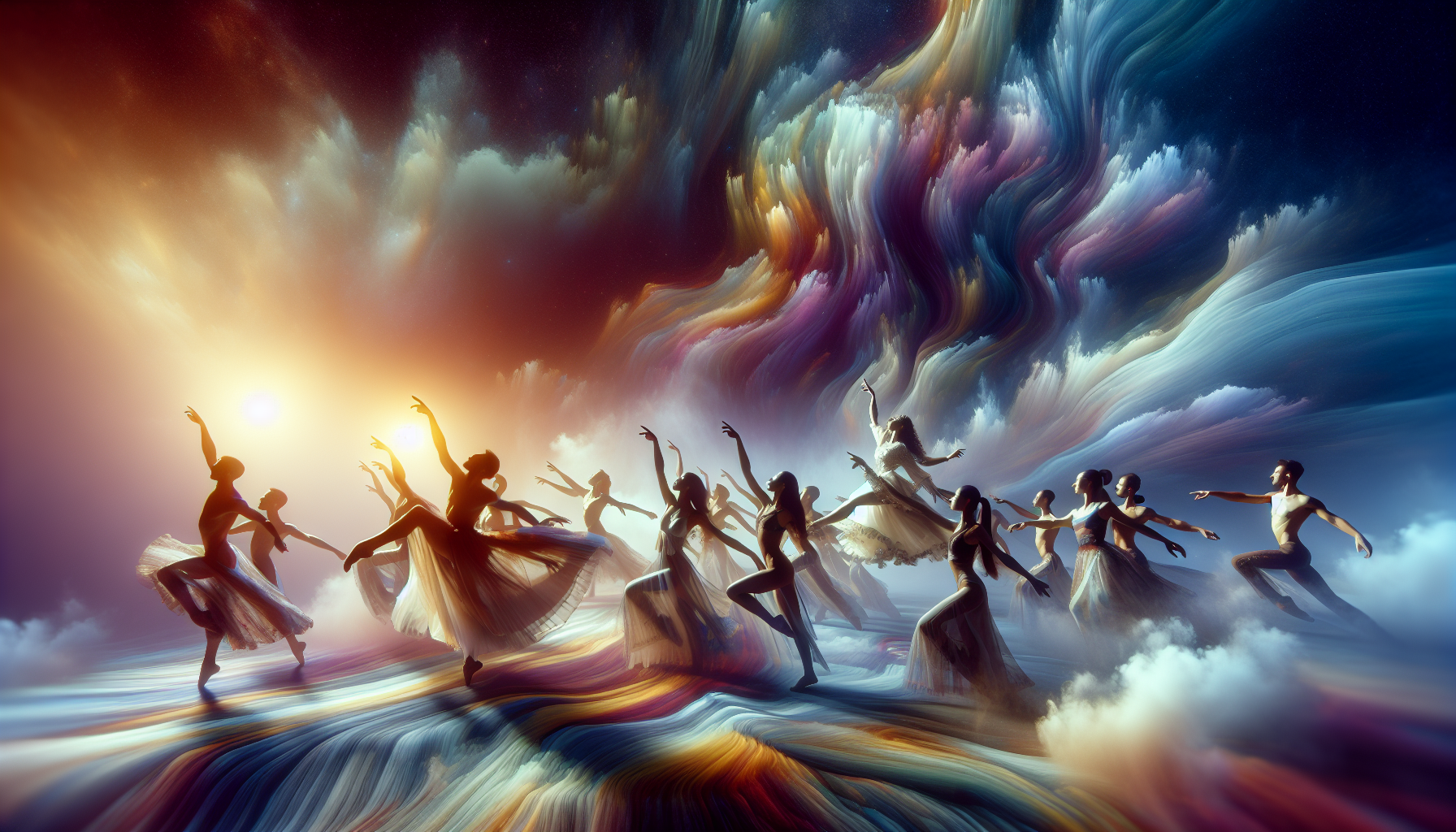In the quiet moments of night, when the world outside fades into shadows, another realm comes to life—a realm of dreams where the subconscious mind weaves narratives from the threads of our waking experiences. Dreams, those ephemeral sequences that captivate and confuse us, have long been a source of fascination and mystery. Yet, beneath their whimsical surface lies a profound reflection of the world we inhabit. Today, we delve into the intricate relationship between dreams and social unrest, exploring how these nocturnal visions can offer insights into the collective psyche during times of turmoil and transformation.
As societies across the globe grapple with profound challenges—be it political upheaval, economic disparity, racial tensions, or environmental crises—dreams become more than mere figments of imagination; they transform into a mirror reflecting the anxieties, fears, and hopes of a populace. This article will journey through the landscapes of dreams, examining their historical significance in times of societal stress and their psychological implications. We will uncover how dreams have been both a refuge and a sounding board for the subconscious processing of social unrest, offering a unique lens through which to understand the depths of collective anxiety.
Through the exploration of various case studies and expert analyses, we will unravel how dreams have historically mirrored societal tensions and, at times, even anticipated major social shifts. From the prophetic dreams that have foreshadowed revolutions to the shared symbols that arise during periods of collective trauma, dreams serve as a vital tool in navigating the complex web of human emotion and societal change. Join us as we unravel the mysteries of dreams and discover their profound connection to the ebbs and flows of social unrest, offering not only a reflection of the world’s struggles but also a beacon of understanding and, perhaps, hope. 🌌✨
Understanding Dreams as Reflections of Social Unrest
Dreams have fascinated humanity for centuries, serving as windows into the subconscious and often reflecting our deepest fears, desires, and conflicts. As we explore the relationship between dreams and social unrest, it’s important to understand how these nocturnal narratives can serve as powerful mirrors of societal issues. Dreams are not merely personal experiences; they are deeply interconnected with the collective psyche, influenced by the socio-political and cultural environment in which individuals reside.
Freud’s psychoanalytic theory posits that dreams are manifestations of our subconscious mind, filled with latent content that reveals hidden emotions and thoughts. Jung, on the other hand, introduced the concept of the collective unconscious, suggesting that dreams tap into universal archetypes shared across humanity. These theories provide a foundation for understanding how dreams can reflect broader social issues, such as inequality, discrimination, and unrest.
Social unrest often emerges when there is a significant discrepancy between societal expectations and reality. This dissonance can manifest in dreams as symbols of chaos, anxiety, or conflict. For instance, during periods of political upheaval, individuals may dream of natural disasters or apocalyptic scenarios, symbolizing the perceived instability in their waking lives. To delve deeper into how dreams reveal the complexities of social unrest, let us consider the following sections that explore various dimensions of this intriguing phenomenon.
The Psychological Framework of Dreams and Social Unrest
Understanding the psychological framework of dreams is crucial for analyzing their connection to social unrest. Dreams are not isolated phenomena but are intricately linked to our mental and emotional states. Carl Jung’s archetypes, for example, are universal symbols that appear in dreams across different cultures and historical periods. These archetypes can represent societal values, conflicts, or collective fears, offering insight into the underlying tensions that contribute to social unrest.
Moreover, research in neuroscience has shown that dreams play a critical role in processing emotions and memories. During sleep, the brain consolidates experiences, integrating them into our long-term memory and emotional framework. This process can be particularly intense during times of social unrest, as individuals grapple with complex emotions and information. Dreams can thus serve as a means of emotional regulation, helping individuals navigate the stress and anxiety associated with societal turmoil.
Consider the example of a study conducted during the Arab Spring, where researchers found that individuals reported dreams filled with themes of freedom, resistance, and revolution. These dreams not only mirrored the socio-political climate but also provided a psychological outlet for expressing and processing the intense emotions associated with the movement. As we examine the psychological framework of dreams, it becomes evident that they are deeply intertwined with the collective consciousness and societal dynamics.
Analyzing Common Dream Symbols During Times of Social Unrest
Dream symbols can vary significantly across different cultures and historical contexts, yet certain themes are remarkably consistent, especially during periods of social unrest. To analyze these symbols, it is essential to recognize the socio-cultural backdrop against which they emerge. Understanding these common symbols can offer profound insights into the collective psyche and the underlying causes of social unrest.
Common dream symbols during times of social unrest often include imagery of conflict, natural disasters, and pursuit. Conflict in dreams may manifest as battles or arguments, reflecting the tension and discord present in society. Natural disasters, such as earthquakes or floods, symbolize upheaval and the fear of societal collapse. Dreams of being pursued can indicate feelings of vulnerability or being overwhelmed by external forces, mirroring the anxiety and pressure experienced during tumultuous times.
Let’s explore a comparative table to illustrate the recurring dream symbols associated with social unrest:
| Dream Symbol | Interpretation | Example |
|---|---|---|
| Conflict | Represents tension and discord in society. | Dreams of battles or arguments. |
| Natural Disasters | Symbolizes upheaval and fear of collapse. | Dreams of earthquakes or floods. |
| Pursuit | Indicates feelings of vulnerability or pressure. | Dreams of being chased. |
By examining these symbols, we can gain a deeper understanding of how dreams reflect the collective consciousness during times of social unrest. This analysis highlights the importance of dreams as a tool for uncovering the hidden emotions and fears that contribute to societal tensions.
The Role of Cultural Context in Dream Interpretation
Culture plays a pivotal role in shaping the symbols and narratives that appear in dreams. The interpretation of these symbols is heavily influenced by cultural beliefs, traditions, and values. For instance, in some cultures, dreaming of water might symbolize cleansing and renewal, while in others, it may represent danger or chaos. Understanding the cultural context is crucial for accurately interpreting the symbols that emerge during periods of social unrest.
In Western societies, dreams are often analyzed through the lens of individual psychology, focusing on personal emotions and experiences. In contrast, many Indigenous cultures view dreams as communal experiences, emphasizing their connection to the collective and spiritual world. This communal perspective can offer valuable insights into how social unrest affects not just individuals but entire communities.
As we explore the cultural context of dreams, it becomes evident that they are not merely personal phenomena but are deeply embedded within the social fabric. By acknowledging the cultural influences on dream interpretation, we can better understand how these nocturnal narratives illuminate the depths of social unrest.
The Intersection of Dreams and Social Movements
Throughout history, dreams have played a significant role in inspiring and shaping social movements. As symbols of hope and resistance, dreams can galvanize individuals and communities, providing a vision of a better future. This intersection between dreams and social movements underscores their potential as catalysts for change and transformation.
One notable example is the role of dreams in the Civil Rights Movement. Leaders like Martin Luther King Jr. famously referenced dreams in their speeches, using them as powerful metaphors for equality and justice. King’s iconic “I Have a Dream” speech is a testament to the transformative power of dreams, both as a personal aspiration and a collective vision for societal change.
Similarly, dreams have been instrumental in shaping Indigenous resistance movements, where they are often viewed as spiritual guides and sources of wisdom. For many Indigenous communities, dreams are seen as messages from ancestors or the spiritual realm, offering guidance and inspiration for resisting oppression and reclaiming their rights.
Consider watching this insightful video on how dreams have influenced social movements: “Dreams and Social Change” by History Insights. 🎥
The Potential of Dreams to Inspire Social Change
Dreams hold the potential to inspire social change by providing a vision of an ideal world and motivating individuals to work towards its realization. This visionary aspect of dreams can foster creativity and innovation, encouraging individuals to think beyond the constraints of their current reality. By offering a glimpse of what could be, dreams can inspire individuals to challenge the status quo and advocate for change.
Furthermore, dreams can serve as a unifying force, bringing people together around a shared vision or goal. In social movements, dreams often become symbols of collective aspirations, fostering solidarity and a sense of purpose. This sense of unity can be a powerful driver of social change, as individuals are more likely to take action when they feel part of a larger community working towards a common cause.
By exploring the potential of dreams to inspire social change, we gain a deeper understanding of their role as catalysts for transformation. Dreams not only reflect the depths of social unrest but also illuminate the path towards a more equitable and just society.

Conclusion
Conclusion: Unveiling the Reflection: How Dreams Illuminate the Depths of Social Unrest
In exploring the intricate tapestry of dreams and their profound connection to social unrest, we have journeyed through a landscape where the subconscious mind intersects with societal realities. This exploration has unveiled the powerful role dreams play in reflecting collective anxieties, hopes, and aspirations, offering a unique lens through which we can better understand the undercurrents of social dynamics.
Throughout this article, we delved into the psychological foundations of dreams, examining how they serve as a mirror to our inner world and the external socio-political climate. Dreams, as we’ve discussed, are not mere figments of imagination; they are complex narratives woven from our deepest fears, desires, and experiences. They can often serve as a barometer for the emotional and psychological state of individuals living through times of social upheaval.
One of the key points highlighted is the universality of dreaming as a human experience. Across cultures and eras, dreams have been a source of inspiration, prophecy, and self-reflection. In modern times, they continue to be a tool for psychoanalysis and introspection, offering insights into our subconscious processes. This universality underscores the potential of dreams to transcend individual experiences and tap into broader societal issues.
We also examined specific examples of how dreams have been historically linked to periods of social unrest. From the prophetic visions of civil rights leaders to the revolutionary dreams of change-makers, dreams have inspired movements and fueled the fight for justice and equality. They have been a catalyst for social change, providing a vision for a better future and motivating individuals to strive toward that vision.
Furthermore, the article discussed contemporary research that highlights the connection between collective dreaming and societal issues. Studies have shown that during times of crisis, such as economic downturns or political instability, there is an increase in dreams characterized by themes of anxiety, conflict, and transformation. This suggests that dreams not only reflect personal concerns but also echo the collective consciousness, offering a window into the societal psyche.
The importance of understanding dreams in the context of social unrest cannot be overstated. In a world where social and political tensions are ever-present, dreams offer a unique avenue for exploring the emotional landscape of individuals and communities. By paying attention to our dreams, we can gain valuable insights into the underlying causes of unrest and work towards addressing these issues at their root.
As we conclude this exploration, it is essential to recognize the potential for dreams to serve as a catalyst for positive change. They invite us to question the status quo, envision new possibilities, and confront the challenges we face both individually and collectively. By engaging with our dreams, we can tap into a wellspring of creativity and resilience, empowering us to navigate the complexities of the modern world.
We encourage readers to reflect on their own dreams and consider what they might reveal about their personal experiences and the broader social context. Sharing these insights with others can foster dialogue and understanding, creating a sense of solidarity in the face of adversity. Whether through art, storytelling, or conversation, dreams have the power to unite us and inspire collective action.
[Explore More About Dreams and Social Change](https://www.psychologytoday.com/us/basics/dreams)
[Read About the Psychology of Dreams](https://www.verywellmind.com/the-psychology-of-dreams-2795930)
By staying curious and open-minded, we can continue to learn and grow, both individually and as a society. Let’s keep the conversation going and strive to turn our dreams into action. 🌍
Gabriel is a visual storyteller and dream archivist whose work explores the fragile boundary between memory and imagination. Through layered visuals and symbolic design, Gabriel captures the fleeting essence of dreams — those strange, beautiful, and sometimes haunting fragments that drift through sleep and linger in waking thought.
His creative journey is rooted in a deep fascination with the subconscious and the imagery it conjures. From half-remembered landscapes to recurring symbols and surreal encounters, each piece Gabriel brings to life becomes a portal into the inner archive — where time distorts, meanings shift, and personal mythology takes form.
With a background in handcrafted artistry and visual composition, Gabriel merges intuition with intention. His work doesn’t merely depict dreams; it preserves them, translating ephemeral moments into tangible expressions that evoke emotion, curiosity, and quiet revelation. Each visual is both a record and an invitation to explore the rich terrain of inner life.
Through illustrated dream journals, symbolic studies, and visual essays, Gabriel invites others to connect with the poetic architecture of their subconscious landscapes. His art becomes a mirror — not only of what we see at night, but of what we carry deep within.
His work is a tribute to:
-
The fragile beauty of forgotten dreams
-
The language of symbols in the subconscious mind
-
The inner worlds we visit but rarely name
Whether you’re a lucid dreamer, a seeker of hidden meanings, or someone fascinated by the mystery of sleep-born stories, Gabriel welcomes you to step into a space where dreams are not lost — they are archived, one vision, one sketch, one silent narrative at a time.





